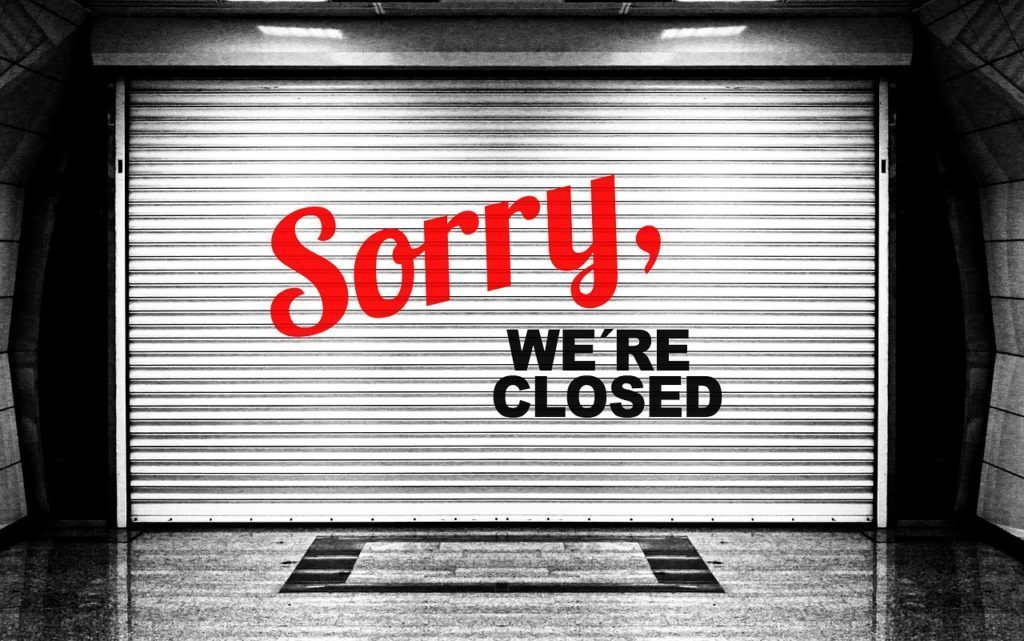In 2024, small businesses in the United States are facing a significant economic crisis, with 48% of small business owners unable to pay their rent in September—the highest rate since the peak of the COVID pandemic in March 2021. Unlike that period, the current economic woes cannot be attributed to health-related lockdowns, indicating deeper systemic issues within the economy. A report by Alignable highlights this troubling statistic, showing a rise from 41% in the previous two months. This situation has created what some are referring to as a “lockdown economy” without any actual lockdowns, raising questions about the current state of economic assistance and resilience among small business owners.
The struggles of small businesses are echoed by larger corporations, such as TGI Fridays, which recently filed for Chapter 11 bankruptcy. The restaurant chain, known for its casual dining, emphasized that it had not fully recovered from the impacts of the pandemic, further exemplifying the ongoing challenges large and small establishments alike face. This “restaurant apocalypse” is a term that has gained traction as numerous chains succumb to financial distress, contradicting claims of economic recovery and stability often touted in media reports. The plight of business owners, like Mollie Engelhart of Sage Regenerative Kitchen in California, underscores the severity of the situation, as she describes her restaurants barely hanging on despite her efforts to keep them afloat.
The middle class is feeling the pinch as well, with a recent survey revealing that 55% of middle-income households in America now rate their financial situation negatively—the highest level recorded since the survey’s inception four years ago. This financial strain is a stark indicator of the decaying state of the middle class, which continues to be affected by rising costs of living and stagnant wages. The emergence of low-cost housing options, such as sleeping pods in San Francisco for $700 a month, illustrates the extreme measures individuals are resorting to in a faltering economy. Such arrangements contrast sharply with the once affordable housing market, capturing the frustrations of a populace struggling against economic headwinds.
Despite government assertions of a recovering economy, emerging data suggests that the labor market is weaker than previously reported. Discrepancies in job creation numbers reveal that actual employment growth has not kept pace with population increases, leaving many potential workers without job opportunities. This reality is compounded by the projected cuts in production by Nissan, indicating that even established corporations are adjusting their expectations downwards in response to consumer demand that appears to be faltering. Such adjustments raise red flags about the sustainability of the economic recovery narrative and highlight potential challenges ahead.
Further signs of economic strain are shown through the shuttering of bank branches across the United States, with over 700 closures reported in just the first nine months of 2024. Major banks, including Bank of America, have significantly reduced their footprints, reflecting a lack of confidence in the economic environment. Warren Buffett’s investment strategy has also shifted, with Berkshire Hathaway increasing its cash reserves to a staggering $325 billion. This trend reflects an anticipation of further economic difficulties ahead, as investment in the stock market decreases in favor of liquidity—the ultimate safety net during uncertain times.
In conclusion, the confluence of dire challenges facing both small and large businesses, the middle class’s financial struggles, and the uncharacteristic behaviors of corporations and financial institutions signals a precarious economic landscape in 2024. The once-promising narratives of recovery seem more like illusions as systemic issues reveal themselves through mounting debt and unsustainable practices. As we look ahead, many anticipate that the economic pain currently felt will only be compounded, making it imperative for stakeholders at all levels to seek responses that address the root causes of these challenges rather than temporary band-aids.

